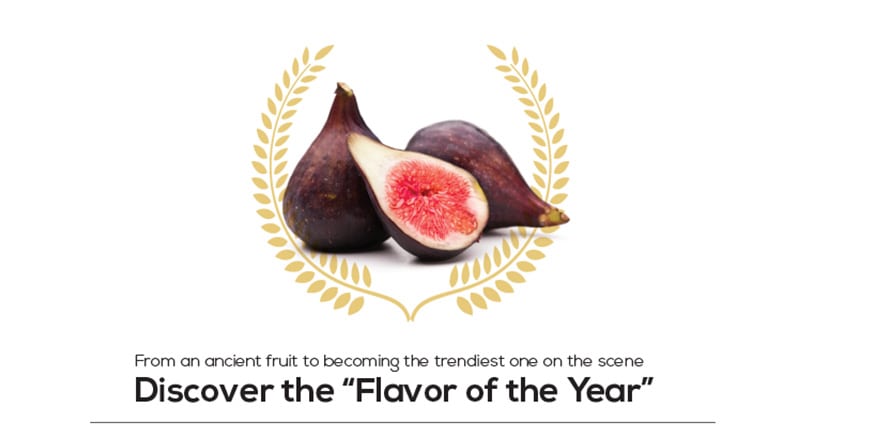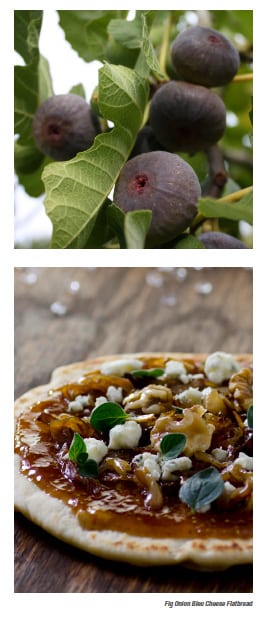

Figs have been a staple fruit in different cultures. Native to the northern part of Asia Minor, fig expanded to the Mediterranean region and were later brought to the Western Hemisphere by the Spaniards. Today, California remains one of the largest producers of fig in addition to Turkey, Greece, Portugal, and Spain.
This path through different cultures led to the inclusion of the meaty fig fruit in sweet and savory desserts. In some countries they cook figs in brown sugar so it creates a type of syrup, and they pair it with fresh local cheese. Other countries pair fig with prosciutto and cheese. Noting its versatility, it’s no wonder why the fig has been chosen Flavor of the Year for 2018 by Firmenich, the world’s largest privately-owned fragrance and flavor company, based on the growing appeal for this healthy and fruity flavor worldwide.
Indeed, figs have a unique flavor and texture. Matthew Walter, head of culinary at Firmenich mentions, “Figs are lusciously sugary with a texture that combines the chewiness of their flesh, the smoothness of their skin, and the crunchiness of their seeds.”
Like all new trends for this year, figs don’t just come bursting with flavor, but they also offer a variety of health benefits—something that a lot of consumers take into account when choosing their ingredients. Figs have a high fiber content and an assortment of essential minerals such as magnesium, manganese, calcium, and potassium. In some studies, they have also found some of the benefits regarding protectiveness against postmenopausal breast cancer, according to www.whfoods.org, a web resource that provides information and expertise on suggested methods of eating and cooking.
The health benefits of fig don’t end at just the fruit; the leaves are antidiabetic and, in some cultures, used as part of the menu. Famous chefs like Alice Waters and Martha Stewart have been known to grill and steam fish such as salmon and halibut with fig leaves.
All of these fundamental benefits of fig lend themselves to beneficial reasons why the fruit can be used as a possible substitute in baking recipes. As suggested by www.trycake.com, use fig in fruit tarts; make fig toast; sprinkle dry figs in salads, or bake fresh ones into a pie.
In following artisanal and craft trends, as Firmenich’s mentions, figs are seen as an ancient ingredient linked to Old World uses, giving some consumers nostalgic, childhood feelings that they are going back to their culinary roots and embracing what nature has given us.
Some are calling figs the new Instagram sensation. There is no doubt that you will start seeing more and more media featuring this fantastic fruit. Aside from the figs’ extraordinary health benefits, based on looks alone surrounding its unique texture, and rich, seedy brown color, fig has definitely proven itself worthy of international attention and inclusion in your sweet and savory culinary creations!
